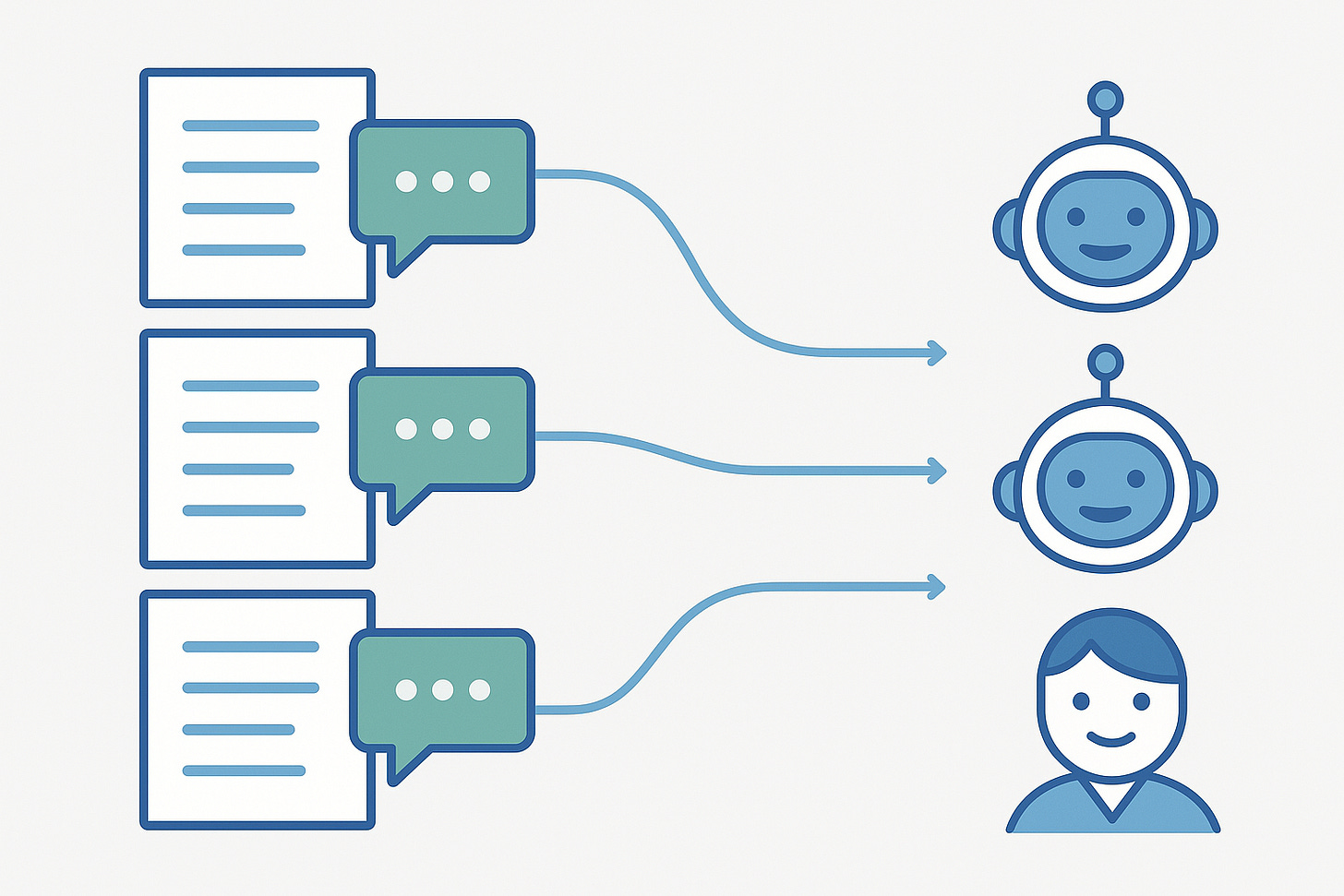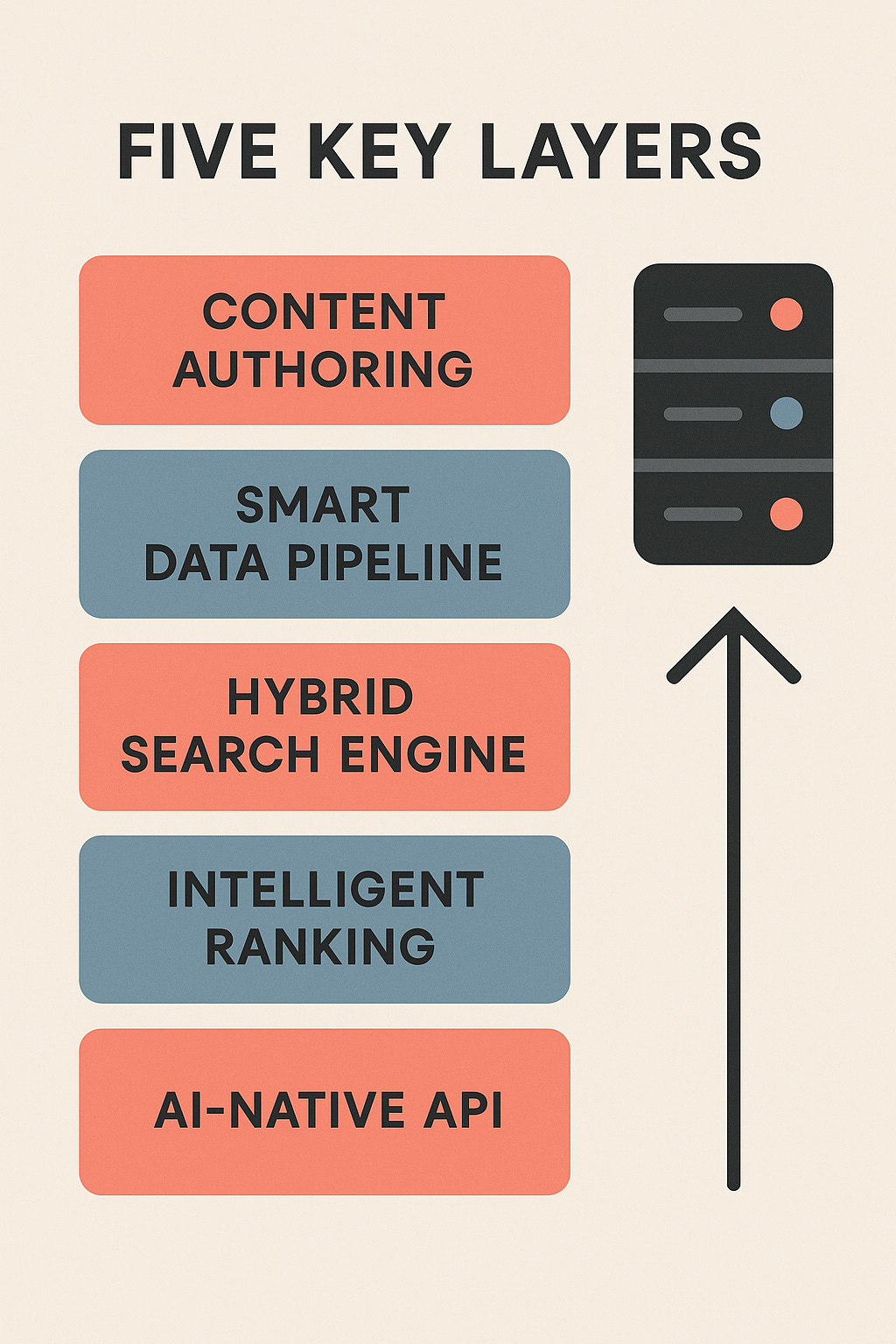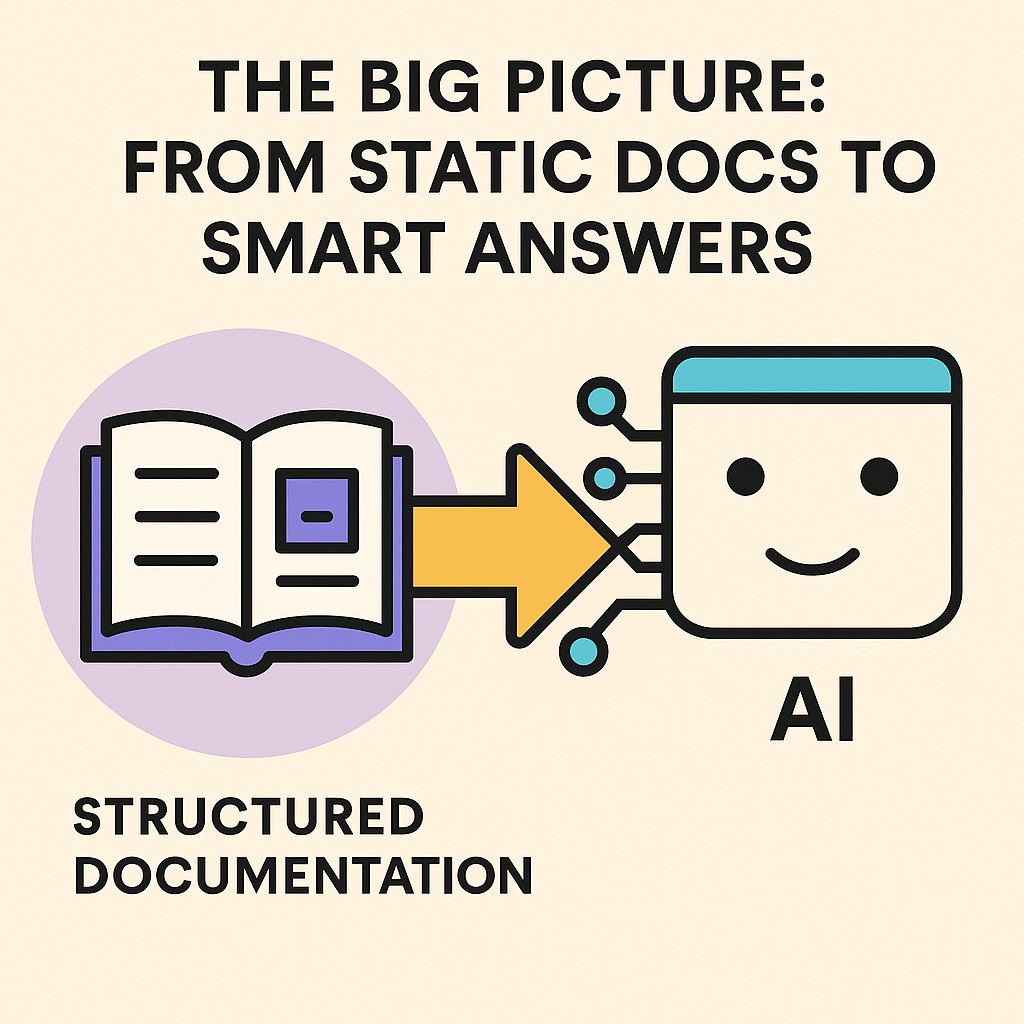Making AI Agents Smarter: How to Turn Your Technical Documentation into an AI-Powered Knowledge Assistant
Solving the problem every documentation team faces in the age of AI
By Sana Remekie, CEO, Conscia.AI
Picture this: Your team has spent months creating comprehensive technical documentation in your content management system. It's well-structured, detailed, and theoretically helpful. But when someone asks ChatGPT or your company's AI assistant a specific question about your product, it either can't find the right information or gives a generic answer that misses the nuances of your particular setup.
Sound familiar? You're not alone. Most technical documentation sits isolated in content management systems, invisible to the AI agents that could make it incredibly useful.
What If Your Docs Could Talk to AI?
Imagine if every piece of your technical documentation could be instantly discovered and understood by AI agents. Not just keyword searching, but truly intelligent retrieval that understands context, relationships between topics, and can provide exactly the right information at exactly the right moment.
That's exactly what this guide will show you how to build—a system that transforms your static documentation into an AI-native knowledge assistant.
The Big Picture: From Static Docs to Smart Answers
Here's what we're building: a pipeline that takes your structured documentation (like DITA content from Heretto CCMS) and makes it discoverable by AI agents through natural language queries. When someone asks "How do I install the CLI?", the system doesn't just return a list of potentially relevant pages—it understands the context, finds related prerequisites and troubleshooting guides, and delivers a comprehensive, structured answer.
Why This Approach Works
The secret sauce is treating your documentation as what it really is: structured knowledge with relationships and meaning. When you author content in formats like DITA XML, you're not just creating documents—you're encoding semantics. The system knows the difference between a task, a concept, and reference material. It understands prerequisites and can follow relationship links between topics.
This structure is what makes AI retrieval so much more powerful than traditional search.
The Architecture: Five Key Layers
Let's break down how this system works without getting too deep into the technical weeds:
1. Content Authoring (Your Writers Keep Writing)
Your content team continues working in their familiar environment—CCMS, creating DITA topics and maps. Nothing changes for them, which is crucial for adoption.
2. Smart Data Pipeline (The Magic Happens Here)
When writers publish new content, the system automatically:
Exports the structured content from your CCMS
Transforms it into a knowledge graph that understands relationships between topics
Creates searchable indexes that support both keyword and semantic search
Sets up real-time synchronization so updates appear almost immediately
3. Hybrid Search Engine (Best of All Worlds)
Instead of relying on just one search method, the system combines:
Keyword search for precise term matching
Vector search for semantic understanding
Graph relationships for contextual connections
This "hybrid RAG" (Retrieval-Augmented Generation) approach means when someone asks about troubleshooting, the system can find not just documents containing those words, but related concepts, prerequisites, and follow-up tasks.
4. Intelligent Ranking (Business Logic Meets AI)
The system doesn't just return results—it ranks them intelligently using:
Search relevance scores
Business rules (like prioritizing task-oriented content)
Relationship density (topics with more connections often contain richer information)
Optional AI re-ranking for the most relevant results
5. AI-Native API (The Interface)
Everything is exposed through a Model Context Protocol (MCP) server that AI agents can easily integrate with. Whether it's ChatGPT, your custom assistant, or a voice bot, they can all ask natural language questions and get structured, actionable answers.
The Implementation Flow: How It All Works
Here's what happens when someone asks your AI assistant a documentation question:
Query Processing: The AI agent sends a natural language query to your documentation system
Hybrid Search: The system simultaneously searches for keyword matches and semantic similarity
Graph Enrichment: For each potential result, the system looks up related topics, prerequisites, and troubleshooting information
Intelligent Scoring: Results are ranked using both relevance and business rules
Structured Response: The AI agent receives enriched, contextual information to craft a comprehensive answer
All of this happens in under 200 milliseconds—fast enough for real-time conversations.
Real-World Benefits You'll See
For Your Users
Instant, accurate answers to technical questions instead of hunting through documentation
Contextual information that includes prerequisites, related topics, and troubleshooting steps
Consistent experience across different AI interfaces (ChatGPT, company chatbots, etc.)
For Your Content Team
No workflow changes—they keep writing in their familiar tools
Automatic synchronization means their updates are immediately available to AI agents
Analytics and insights about which content is most useful and where gaps exist
For Your Technical Organization
Reduced support burden as users can self-serve more effectively
Improved onboarding for new team members who can ask natural language questions
Cross-system integration that connects documentation to products, support tickets, and other business data
Getting Started: The Building Blocks
To implement this system, you'll need several key components working together:
Content Export: Automated extraction from your current documentation system (like Heretto's Deploy API for regular JSON exports)
Data Processing: Jobs that transform your content into a searchable knowledge graph with proper relationships and metadata
Search Infrastructure: A hybrid search engine (like OpenSearch) that can handle both keyword and vector searches simultaneously
Orchestration Engine: A system that coordinates the search, graph lookup, and ranking processes
Agent API Gateway: An MCP server that exposes your documentation capabilities to AI agents
Key Success Metrics to Track
When you implement this system, here are the metrics that matter:
Discovery Accuracy: AI agents should find relevant documentation with over 90% accuracy
Response Speed: Search responses delivered in under 200ms for good user experience
Synchronization Time: New content should be available to AI agents within 5 minutes of publishing
Query Satisfaction: Users should find complete answers without needing to dig through multiple documents
Common Pitfalls to Avoid
Over-Engineering: Start with basic hybrid search before adding complex AI re-ranking. You can always enhance later.
Ignoring Content Structure: The power of this approach comes from structured content. If your documentation isn't well-structured, fix that first.
Neglecting Performance: AI agents need fast responses. Optimize for speed from day one.
Forgetting the Human Element: Even with great AI integration, your content still needs to be well-written and logically organized.
The Bottom Line
Your technical documentation is a goldmine of structured knowledge that AI agents can unlock—if you build the right bridges. By implementing a system that combines hybrid search, knowledge graphs, and intelligent ranking, you transform static documentation into a powerful AI-native knowledge assistant.
The result? Your users get instant, accurate answers to complex technical questions, your content team sees their work having greater impact, and your organization reduces support burden while improving user experience.
Most importantly, this isn't a replacement for good documentation—it's a multiplier that makes your existing investment in content dramatically more valuable.
Ready to make your documentation AI-native? The pieces are all available, and the benefits are real. The question isn't whether this approach works—it's how quickly you can implement it to start seeing the benefits. 🤠
Sana Remekie is CEO and co-founder of Conscia.ai, a Toronto-based enterprise software-as-a-service company.





Moving from a developer role to a technical writer role in the middle of the generative AI revolution was a bad career move, they said... Maybe not! Not that I cared much anyway.